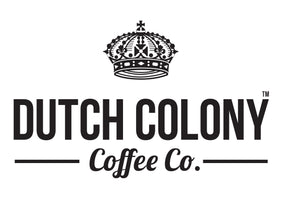Dining-In vs To-Go Coffee Beverages: A Barista Dilemma & A Customer Expectation
"Hi, is this a Large?"
"I think someone drank my coffee. I ordered a cappuccino and it came half-filled!"
"Why is my Espresso Machiato in a small cup?"
"There is no foam in my Flat White."
"I ordered a Flat White and a Cappuccino but both arrived looking the same."
The list goes on and on...

Entering into the 8th week of lockdown (or Circuit Breaker as we call it here in Singapore) ever since it was first announced and introduced on the 7th of April, the cafe tables and chairs are put aside, all dining-in cutleries are kept in storage and in replace are queue pole and lines that are spaced out with yellow tapes at one metre safe distancing apart, waiting boxes outside of every shops for our delivery personnels if the indoor has more then 5 or 10 people and all food and beverages are prepared and served only in disposable packaging. This become the norm and at least here to stay for a few more weeks until Phase Two of the re-opening is introduced.
With the changes and new implementation of stricter guidelines, we made a mad scramble to stock up on more disposable cups and packagings like our lives depends on it. During pre-Covid-19 years, 80% of our revenue generated are from dining-in consumers. At the same time too, we have never engaged into any delivery platforms so stocks of disposable packaging can at times stretches a few months before replenishment is needed. By the 7th of April, circumstances changed!
You see, we applied for and received approval to remain in business as an essential service and in doing so, we have to abide to a smaller team daily and selling all our food and beverages in paper cups and paper lunch boxes and soup bowls. Like almost everyone else in this industry, we enter into the unknown (though cautiously and with much hesitation) world of 3rd party food delivery platforms too as historically, only 20% of our business were takeaway customers. As we pledge to keep all our full time employees in the payroll during this difficult time, we have to remodel the business and cannot simply leverage on the 20% takeaway customers of the past. Broadening the horizons means working with these 3rd party delivery platforms and soon enough, new business challenges unfold itself for us to manage.

Everything about specialty coffee is special and different from the commercial ones - from flavours down to beverage sizes, the former is something that has since become a dilemma for our Barista in this 'new norm' context. We do not do Small, Medium and Large but rather we are happy to make you a delicious 5oz (150ml) espresso-based milk beverage in a branded ceramic cup with a nice weight to it, and if you do need a 'large', we have the 8oz (240ml) option in-house too. With a single well-extracted-espresso shot in the 5oz (double shot for the 8oz), we are able to keep every serving of coffee balanced with a good harmony of espresso to creamy frothed milk. What can go wrong if we do it to-go in a disposable cup? Everything. Everything that can go wrong, have been going wrong!
The complimenting industry to the specialty coffee business are designed with the commercial coffee business as the mainstream. This means that ready paper cups on the shelves are of a standard size of the small (8oz), medium (10oz) and large (20oz). We can have the option of customising the size that comes with a hefty price and probably a minimum manufacturing quantity that will last a lifetime or choose a template that is close enough, and in this case using their 'small' for our 5oz beverages (150ml in a 240ml paper cup) and their 'medium' for our 8oz beverages (240ml in a 300ml paper cup).
To preserve the same high quality taste that one experienced in any of our shops is to re-train our barista to ensure the same volume discipline is practised in the disposable paper cup; pouring into the paper cups to 2/3 fill and explaining to every customers on why we do so. The pouring & explaining practise continue but unfortunately, explaining it to the customer who orders via the delivery platforms has to come to a halt and this is where nightmare begins....
"Hi, is this a Large?"
"I think someone drank my coffee. I ordered a cappuccino and it came half-filled!"
"Why is my Espresso Machiato in a small cup?"
"There is no foam in my Flat White."
"I ordered a Flat White and a Cappuccino but both arrived looking the same."
The list goes on and on.
This article by no means to spite the critics. Our job is to provide the coffee education in explaining why our coffee is made a certain way, and this is a task that is almost impossible when our coffees are ordered, delivered, served and consumed through a delivery platform. As we also judge a product with our eyes before tasting it, it is just natural to think that the vendor has shortchanged us when a product comes not filled to the brim. That is why plating is so important and getting the right ceramic vessels in accordance for the beverage volume served for dining in customers becomes a priority.
Unfortunately, when limited to the disposable cups that comes from commercial manufacturer, we are not able to source for the correct cup sizes that compliments our beverages. Neither is going against our beverage recipe and simply taking the easier way out of filling the cup up to the brim with topped up milk is a choice that we are willing to take.
Where do we meet at a centre point that is a win-win for both our customers expectations vs what our Barista are trained to do? Why do we need to meet in the centre at the first place, compromising our quality as a result? Countless hours of brainstorming with the leads in our business even come down to a proposal of taking out all the hot beverages off the menu from the delivery platforms, an option that send chills to our spine as coffee roasters and crafters of specialty coffees. If we cannot live up to our own expectations and demands from the discerning palate of our consumers, it is so difficult to lift that milk jug to pour out our hearts and souls into the cups. Thankfully enough, it was not the option we took as consistently too the feedbacks that we received from those who received their coffees via the delivery platforms validated what we do best.
So where do we take it from here? We will continue crafting and brewing our coffees the way it should be, and get ourselves ready to receive questions from first time customers on why the beverages are not to what they have expected to be. We have barista/s behind our social media platforms who speaks the language and will passionately guide these customers to what the coffee are, how it should be drunk and what they should order in the future to avoid having the same experience. After all, a 30ml or so single-shot Espresso travelling in a paper cup for 30 mins to your home is not an ideal beverage of quality that you want to pay for, it is not a beverage quality that we like to serve anyway.
And yes, we will continue taking the question and patiently replying that Caramel Macchiato and Espresso Machiato is as different as chalk and cheese!

